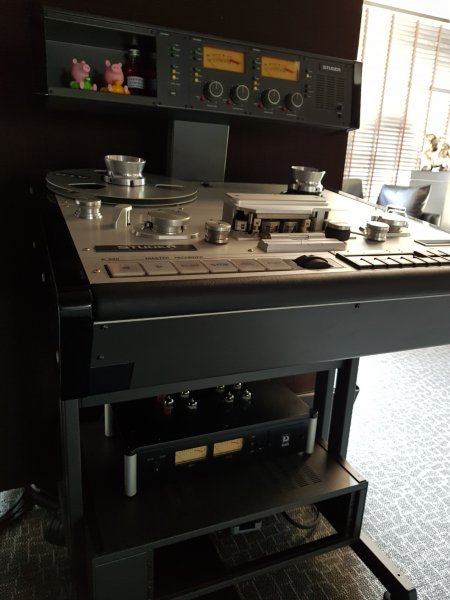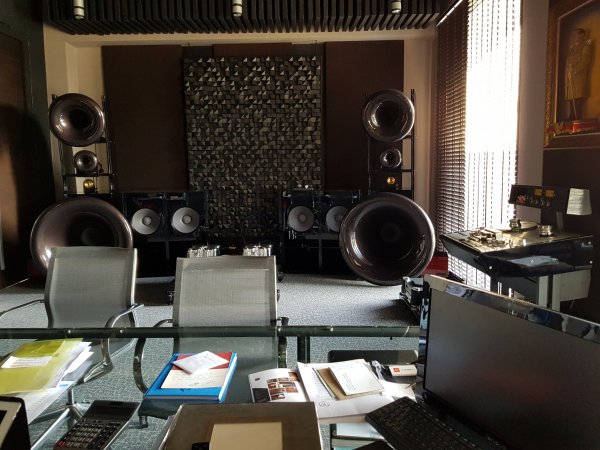If the MSL PS is even more resolving at the frequency extremes then I would prefer the Opus.
This is fair -- as your subjective preference. More detail does not, for me, equal more naturalness or a greater illusion or an easier suspension of disbelief.
I hear attention-grabbing detail as a sonic artifact -- one which takes me away, and not toward, believability.
(In this I think I am agreeing with David.)
Having read through all of the various posts, especially the recent ones from Folsom, I better understand the distinction people are making between resolution, detail, and how volume effects them. I also appreciate the emphasis on the Fundamental’s role in the importance of conveying the music’s emotional message and how false or enhanced details may distract one from that message.
Where this breaks down for me, and why I think that perhaps the opposing views may be sliding past each other, is in my recollection of how I hear small scale live music performances from a close up perspective and then how that is similar or not with what I have experienced in superior halls with large scale performances.
A year or so ago I attended a live chamber performance with some WBF members in Boston. We heard a violinist and a cellist perform in a large formal living room setting. A year prior to this, I heard the same cellist accompanied by a pianist. More than anything else, what strikes me about these two performances is the sheer energy that filled the room when the instruments were played. We sat roughly 15’ away. There were about twenty five people in the room. The volume and sound resonating into the room when the keys were struck or the strings were bowed was overwhelming. The amount of detail in that sound, the texture of the bow against the strings and the cello body and soundboard vibrating is something I will never forget.
A few years prior to this I spent five days sitting at the edge of the orchestra pit listening to rehearsals at the Vienna State Opera. A huge space, silent with only the singers, musicians and conductor, I could hear a pin drop on the stage floor. I heard people shuffling back stage, the pages being flipped at the podium. I heard that same energy from a solo cello during a passage. Then later during the evenings, I sat in the Director’s box seat in the second balcony way in the back of that great hall listening to different final performances. Again, I was struck by the details I heard on the stage. Though now, it was not a page being turned, or the concert master breathing, but a single triangle strike ringing and decaying in space, the low rumble of timpani, the individual voices as they sang in unison. Quiet sounds, projected beautifully long distances in that great hall.
The listening perspective had changed, the audible details changed, but the clarity and amount of sheer information remained extremely high from both seating positions. This change is possible because I moved. What is captured by the microphone and embedded in the grooves is fixed. That information is there for us to hear in as natural, undistorted and honest way as possible.
I don’t know if the energy released by the bow agitating the strings of a cello is the essence of the sound or a detail, but that friction, that texture followed by the resonating wood creating a rich tapestry of harmonics, color, tone, expression whatever you want to call it. That is detail. Can the music’s emotional message be conveyed without it? Perhaps, but if that sound can not be fully captured in a recording and then fully reproduced by an audio system, the experience of listening to it will not be as fulfilling, at least to me. And it will not be a convincing recreation of the way that instrument sounds live.
I can be emotionally move by listening to an old favorite Deep Purple song on my truck radio or CD player. It congers up memories and I can be lost in the moment and music. But that is not about resolution, let alone detail. It is not about believability. It is pure memory and emotion. I want something different, more immersive, more rich, and more lifelike when listening to my stereo, Deep Purple, Shirley Horn or Beethoven’s Violin Concerto.
Once heard and experienced, I want to recreate that energy of a live cello heard up close from my system in my living room. If it is close mic’d with breathing, I want to hear as much of that as possible. If it is from a further back perspective, I want to hear that. We can debate what are details, what is the fundamental, and what is the musical message. I want the full experience of what I hear in an intimate setting or one of the worlds great concert halls recreated in my room. I am surely not going to get it though my audio system in all of its glory, but that is the goal, for me. Compromises certainly exist, but to purposefully avoid gear which is “even more resolving at the frequency extremes” does not really make sense to me. I agree that gear that emphasizes certain frequencies to enhance false details should be avoided. That is not true to the recording or to the live experience.
Sure, I did not hear the conductor breathing or the pages being turned from way up back in the director’s seat, but I surely heard it from the edge of the orchestra pit. And if the mics pick it up and it remains on the recording, I want to hear it in as natural and convincing a way as I hear it live. When I hear Starker breathing during the Bach Cello Suites or Buddy Guy’s fingers plucking those strings on Folk Singer, those are the details that bring them to life in my living room. I heard the breathing and finger playing at the chamber performance in Boston, and I want to hear it in my home if it is on the recording and adds to the experience. Now, if only I could hear the instruments’ incredible energy too, in all of its colorful, nuanced, expressive richness, and sheer unadulterated volume and clarity from my system. Then, I would be making some real progress.
As this is Ron’s thread about his new system, it sure seems that the Gryphon Pendragon and American Sound AS2000 will be steps in that high resolution direction. They must certainly be components capable of reproducing any detail captured on a recording, even those at “frequency extremes”. Otherwise, why go to the effort and spend that kind of money? I suspect Ron wants high resolution portrayed in a natural and convincing way. The discussion seems to be about how much detail is needed for the sound to seem natural and convincing. Or maybe, this is really about our understanding of how the quality of sound effects our appreciation of the music.




